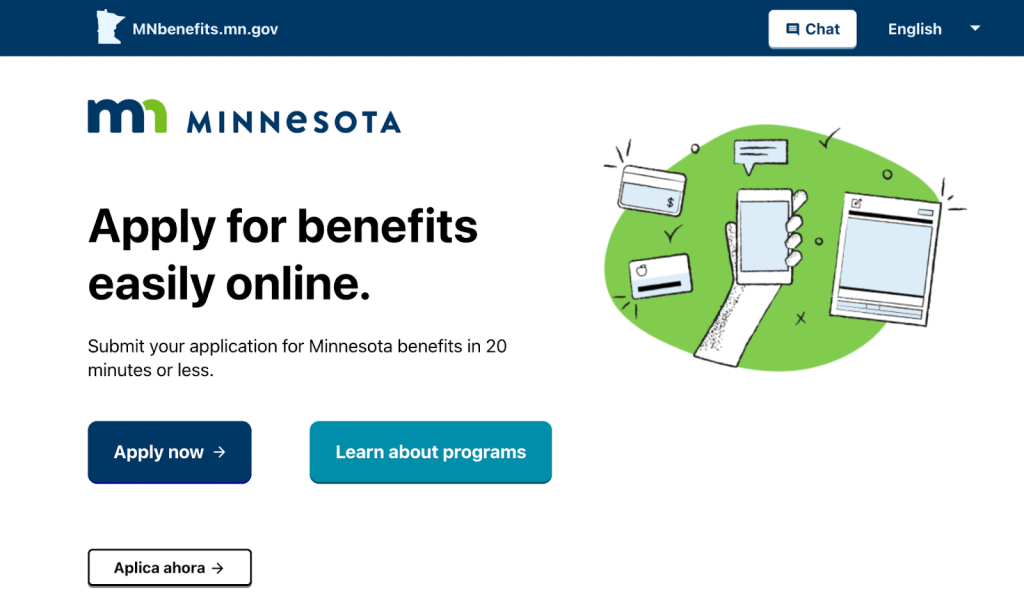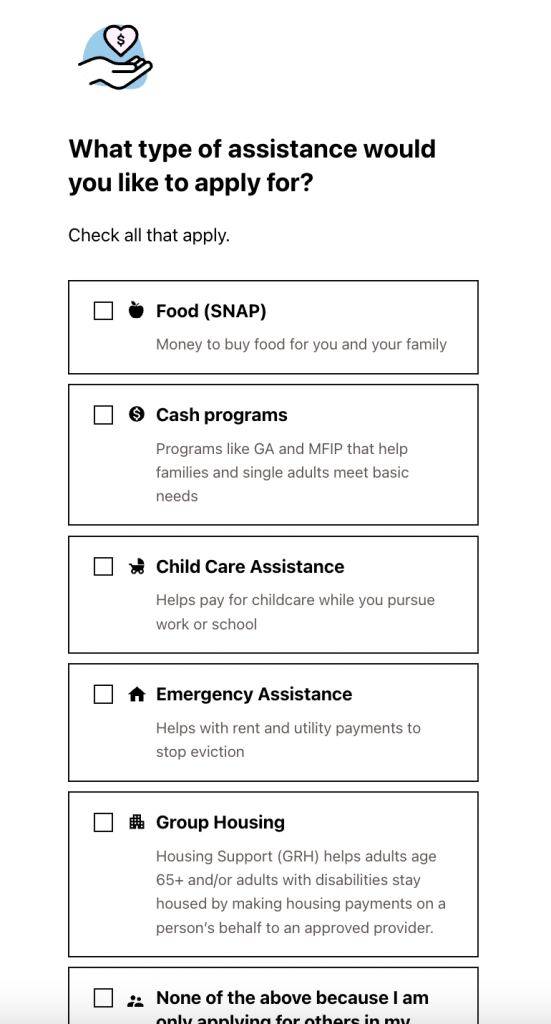Governments provide a range of services to help people meet basic needs.
Depending on how you count, the U.S. has around a dozen major safety net programs, plus many smaller ones. Since these programs provide some form of financial or material assistance, it is often the case that people in certain life circumstances are eligible for more than one of them. Yet often they require separate applications sent to separate departments — frequently repeating a lot of the same questions and verification requirements.

The reason for this setup is usually perfectly innocent: Different programs were created by laws at different times and were set up by considering the question of how to fit them into the bureaucracy. Still, from the perspective of people interacting with them, this can result in duplicative work and needless frustration.
There’s a better way. Integrated applications for multiple programs — whether we’re talking about the social safety net or any number of other realms — can provide a much simpler and easier experience for people trying to access government services.
Case Study: Integrating Benefits Applications in Minnesota
Minnesota offers a great example of what such an integrated application can look like. Over the past several years, my colleagues at Code for America worked together with the State of Minnesota to create MNBenefits, a unified application that brings together nine different benefits programs — including SNAP, cash assistance, and child care assistance — and “reduces the time it takes to apply for benefits from 110 minutes to less than 20 minutes.”

On the site, people can select which programs they wish to apply for, then supply the required information just once no matter how many programs they’ve selected.

One advantage of having a combined application is that it allows more resources to be concentrated on that one platform. The team was able to invest a lot of time in user research, design, and testing in order to create an experience for applicants that is as smooth and easy as possible. Realistically, if applicants had been required to fill out nine different forms, the programs couldn’t give them a comparable user experience due to resource restraints.
The site is also mobile-friendly. If you want to try out the application yourself, check out the demo version of the site.
Doing It Yourself
If you work for a state government and want to learn more about creating integrated benefits systems, check out the Minnesota team’s report with more details about the project and lessons learned. Looking beyond Minnesota, the recently-released Benefits Enrollment Field Guide offers a detailed look at the applications for major benefits programs in every state in the country, with a spotlight on which ones offer integrated applications.
Beyond the safety net, there are other domains where this approach is applicable too! For example, consider:
- Permitting and licensing: Does your government handle licensing and permitting for new businesses or construction projects? Could there be an opportunity to have people submit information for multiple permits or licenses at the same time, helping to reduce paperwork?
- Change of address: Do you have multiple agencies that would want to know about someone’s change in address? Is it possible to have a single form that people could fill out that could then notify all of the relevant agencies?
- School enrollment: Are there multiple related forms that parents need to fill out to enroll their children in school or as a routine part of a new school year? Could they be brought together?
Any case where people experiencing a certain situation need to fill out multiple forms is an opportunity to do this kind of work. It also may be an opportunity to create “one-stop shops” for in-person services.
If you have a situation that requires working across departmental boundaries, that can certainly be particularly challenging — but doing so successfully can also be extraordinarily impactful for the public.
Whether it’s helping people in difficult financial situations access benefits programs that provide a helping hand, supporting entrepreneurship through streamlined permitting and licensing processes, or any number of other cases, allowing people to apply for multiple programs using a single application can be a critical step in creating more human-centered public services. Today is a great time to get started!
Greg is the Associate Director for Human-Centered Government at Code for America, where he is leading efforts to support public servants with resources and training on the organization’s principles and practices for how government can and should serve the public in the digital age.





Leave a Reply
You must be logged in to post a comment.